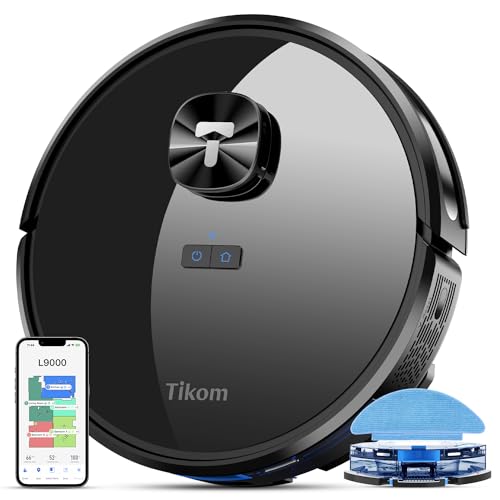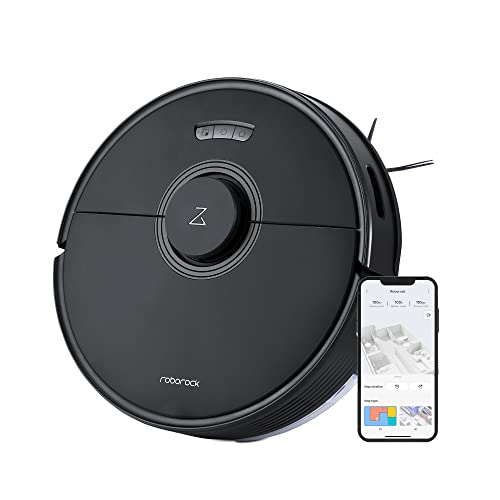What's The Current Job Market For Lidar Vacuum Professionals?
페이지 정보

본문
 Lidar Navigation in Robot Vacuum Cleaners
Lidar Navigation in Robot Vacuum CleanersThe incorporation of lidar navigation has revolutionized the robot vacuums' ability to navigate and clean areas. This advanced technology provides efficiency and precision, as well as adaptability and flexibility that was previously unimaginable.
Lidar uses laser light to measure distances and create maps of the area. Unlike gyroscopes, this system keeps an eye on where the robot is within the space and enables it to plan its path and take over every corner of the space.
Improved Cleaning Efficiency
Lidar navigation is a game changer in robot vacuum cleaners. It allows them to navigate rooms with precision, efficiency and flexibility that was previously unimaginable. It also helps improve battery performance, by making it possible for the vacuum to optimize its cleaning routes, reducing repetition, and ensuring all areas are covered.
The technology works by emitting laser beams that reflect off objects in the room, thereby determining the time it takes for the light to reach and return to the sensor. It then can identify these objects and record their location, creating a map that allows robots to move around.
The maps when combined with SLAM (Simultaneous Location Mapping) algorithms, allow the robot to navigate around furniture and other obstacles while cleaning. This means shorter run times as well as more efficient and thorough work.
However, the sensors need to be kept clean to function properly, since dust and debris can impede their ability to detect obstacles. Fortunately, this can be easily accomplished by wiping the sensors with a damp cloth or a cotton swab.
Lidar-equipped robots can also provide more functionality than their counterparts that rely on cameras to navigate and map the home, such as objects recognition and smart home integration. For instance, certain models can detect moving objects like shoes or toys and automatically route around them to avoid damage to the vacuum or objects. Other models can be programmed to eliminate virtual boundaries or create zones that the robot vacuum with lidar and camera will avoid, allowing you to customize the way in which the robot functions in your home.
Lidar-based robots can also be more expensive than counterparts that utilize cameras for navigation, but this gap is closing over the years as the technology becomes more affordable and widespread. When selecting the best robot for your home, buyers should take into consideration their requirements and preferences, regardless of cost. After a bit of research, consumers should be able to find the robot that best suits their requirements and provides the features and capabilities they prefer.
Reduced Collision Risks
Unlike more basic robot vacuums that rely on bump sensors to avoid obstacles, lidar navigation is much more precise. This enables a more systematic method of cleaning, since the robot follows optimized routes. It will get into every corner of your house and doesn't waste time crashing into walls or furniture.
Lidar-based robotic systems are also known to be more efficient than those using simpler navigation systems. The reason is because the precise mapping and obstacle avoidance capabilities of a lidar vacuum ensure that they don't need to repeat the same moves over and over again, which can wear out motors quicker.
The method a lidar sensor operates is by shining a laser beam in an area and observing the reflections of that beam off of objects, allowing the robot to create a 3-D map of the environment around it. These systems are not affected by lighting conditions and may be more effective than cameras, which struggle to identify certain kinds of objects or may have difficulty in navigating rooms with a lot of glass or mirrors.
Lidar-based navigation technology improves the user experience, while also decreasing the chance of collisions. The precision of a device that uses lidar technology is far superior to the simpler robot vacuums which use bump sensors which are activated by the robot's brushing against an object or the wall.
Many of the best lidar robotics are equipped with drop-sensing technology that stops them from falling down steps or steps. This is a frequent cause of injury to the robot and Lidar Vacuum the furniture in the space. This feature is not available on less expensive models which rely on bump sensors to avoid obstacles. This can cause frustration for the owners.
Improved User Experience
The introduction of Lidar navigation in robot vacuums has been a game-changer that has elevated them from being simple cleaning tools to intelligent and adaptable household companions. This technology provides the precision in accuracy, precision, and flexibility that was previously only available to higher-end robots.
Lidar operates by sending invisible laser beams into the environment, measuring not just the size of objects, but also their shape and location. The device is then able to create an overall map of the space, including distances between objects. The device can then utilize this map to navigate the space more efficiently to avoid collisions and missed spots and cleaning more thoroughly.
A robot with lidar sensors, in contrast to models that 'bump and go, which depend on physical contact to map the environment and measure distances, is able to accurately measure distances between itself and other items in your home, such as furniture legs or crystal vases. It can also identify smaller objects that other sensors might miss, such as remote controls or cords.
A lidar-based robot could be programmed to steer clear of specific areas and spaces, making it easy to keep the machine away from certain objects or areas of your home. It will detect when it enters a carpeted space and increase the suction to stop dust from getting into the air.
This robot's MagSlim LiDAR+SLAM navigation system employs a self developed intelligent path planning algorithm to create a map of your house and devise the most efficient route. This provides high levels of coverage, reducing the time needed to clean your entire house. The sensor is designed to avoid common failure mode, ensuring that the MagSlim robot will be reliable and continue to work for years to come.
This model is equipped with a range of sophisticated sensors including LiDAR technology. It is among the most advanced and efficient cleaning robots available. Its anti-drop sensors are made to prevent it from falling over equipment or stairs, while four anti-collision sensors help it avoid obstacles like steps and furniture. It is programmed to stay clear of certain rooms or areas by using virtual barriers. It can connect with other smart home devices such as Google Home's Assistant or Amazon Echo's Alexa to provide a hands-free control.
Safety Improved
Alongside improving navigation, a more detailed map of the room helps Lidar robots avoid obstacles while cleaning. They are less likely than they were before to run into furniture or other obstacles, and are able to avoid getting stuck. In the end, they can move more effectively and clean up more areas with a single charge.
In contrast to other robot navigation technologies like cameras or gyroscopes, Lidar can detect a greater variety of objects, such as furniture, flat surfaces and walls. This makes it a more reliable and accurate system that can adjust to dynamic environments that change, like changing configurations for homes or temporary obstacles.
However it is important to note that Lidar systems are susceptible to interference from transparent or reflective objects that can interfere with the laser beams emitted by the sensors. Certain manufacturers have added additional sensors and improved algorithms to detect objects better. Certain robotic vacuum cleaners, lidar vacuum for example, use cameras and lidar to ensure optimal performance, particularly in challenging lighting conditions and in areas that are cluttered.
Additionally, the sensors used by Lidar-based navigation systems could require routine maintenance to ensure that they're working correctly and taking in all relevant data from the environment. These systems are more expensive than those that rely on simpler navigation technology.
These sensors have their own challenges. While they are used by self-driving vehicles, delivery robots, industrial robots, and other robots to determine distances and navigate around obstacles, they do not come without problems. Researchers have discovered an attack that permits a bad actor to snoop into homeowners' private conversations through the sensors of their robotic vacuum cleaners.
 Fortunately, this attack does not appear to be widely deployed or sophisticated, therefore it's unlikely to impact the majority of households. As a result, there is still a lot of demand for robots that utilize LiDAR to safeguard the security of both businesses and homes. Although these systems are more expensive than those that rely on simpler sensor technology advancements in the future can reduce costs and make them more affordable to a wider audience of consumers.
Fortunately, this attack does not appear to be widely deployed or sophisticated, therefore it's unlikely to impact the majority of households. As a result, there is still a lot of demand for robots that utilize LiDAR to safeguard the security of both businesses and homes. Although these systems are more expensive than those that rely on simpler sensor technology advancements in the future can reduce costs and make them more affordable to a wider audience of consumers.- 이전글10 Truques Para Emagrecer Simples e Curiosos 24.03.15
- 다음글11 Strategies To Completely Redesign Your Washer And Dryer Combination 24.03.15
댓글목록
등록된 댓글이 없습니다.
